appliances
 Retainers
Retainers
While wearing a retainer is very simple it is a very complex and powerful appliance. A retainer is designed to keep your teeth where your braces moved them. Wearing your retainer as instructed is the key to maintaining success of your orthodontic treatment.
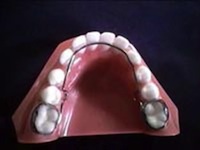
What is a space maintainer? (Lingual arch)
Baby molar teeth, also known as primary molar teeth, hold needed space for permanent teeth that will come in later. When a baby molar tooth is lost, an orthodontic device with a fixed wire is usually put between teeth to hold the space for the permanent tooth.
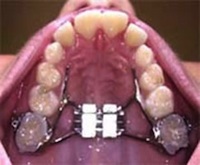
What is a palatal expander?
The maxilla, or upper jaw, is joined in the center by a suture, or joint, which allows it to be separated and expanded. Once this has occurred, the two halves knit back together and new bone is laid to make the jaw wider.
The palatal expander is cemented in place, and the expander screw should be turned once a day. The key is inserted into the hole and pushed towards the back of the throat until the next hole is in view, and then the key is removed.
Your teeth may be uncomfortable for a day or two. You may feel pressure below your eyes after turning the screw, which will disappear in a few minutes. Within a week or two a space between your upper central incisors will appear. (This means your expander is working.) Do not worry; this space will slowly disappear after you stop turning the screw.
Stop turning the palatal expander and call our office if:
- You feel too much pressure after turning the screw
- It is causing headaches
- Your vision becomes blurred
After the palate has been widened enough, a wire will be placed in the screw to prevent any movement. To allow new bone to fill the suture, the expander will remain in place for 4 to 12 months.
Special care must be given to keep this appliance clean:
- Brush well around bands and wires
- Review your food list
- No gum chewing
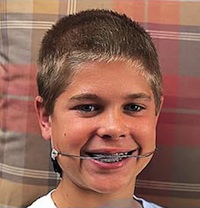
What is headgear?
Headgear creates special forces that guide the growth of the face and jaws. It is also used to move teeth and create space. In general, try wearing the headgear 3-4 hours for the first 2-3 days, increasing to 6 hours over the next 2-3 days. When it is comfortable, try sleeping overnight with it. Your goal is to wear the headgear a minimum of 12-14 hours per day unless otherwise told. Your teeth may be tender or even slightly loose for the first few days after the headgear is worn. This tenderness will disappear as you adjust to the new pressure, so do not be discouraged.
- Bring your headgear to all appointments since it will require adjustments.
- Do not allow others to snap it or pull on it. Mistreatment of your headgear could result in harm to you or someone else.
- Do not wear headgear during sports or physical activities.
- If you feel your headgear is not fitting correctly, or a band is loose, discontinue wearing and please call our office for an appointment.
Wearing headgear may not be much fun, but it is necessary for the success of your treatment. The more you wear your headgear the sooner you will be done with it.
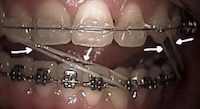
What are elastics (rubber bands)?
Wearing elastics (rubber bands) improves the fit of your upper and lower teeth. Rubber bands should be worn at all times, except eating and brushing. Unless otherwise prescribed. Be sure to change your rubber bands several times a day. Make sure to carry extra rubber bands at all times in case one breaks.
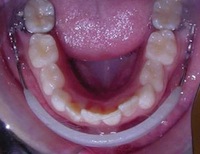
What is a lip bumper?
A lip bumper is a wire that extends from one lower molar to the other, resting between the teeth and cheeks. The lip bumper keeps the cheeks and lower lip away from the teeth. This allows the tongue to gently push on all your teeth, making more room for them.